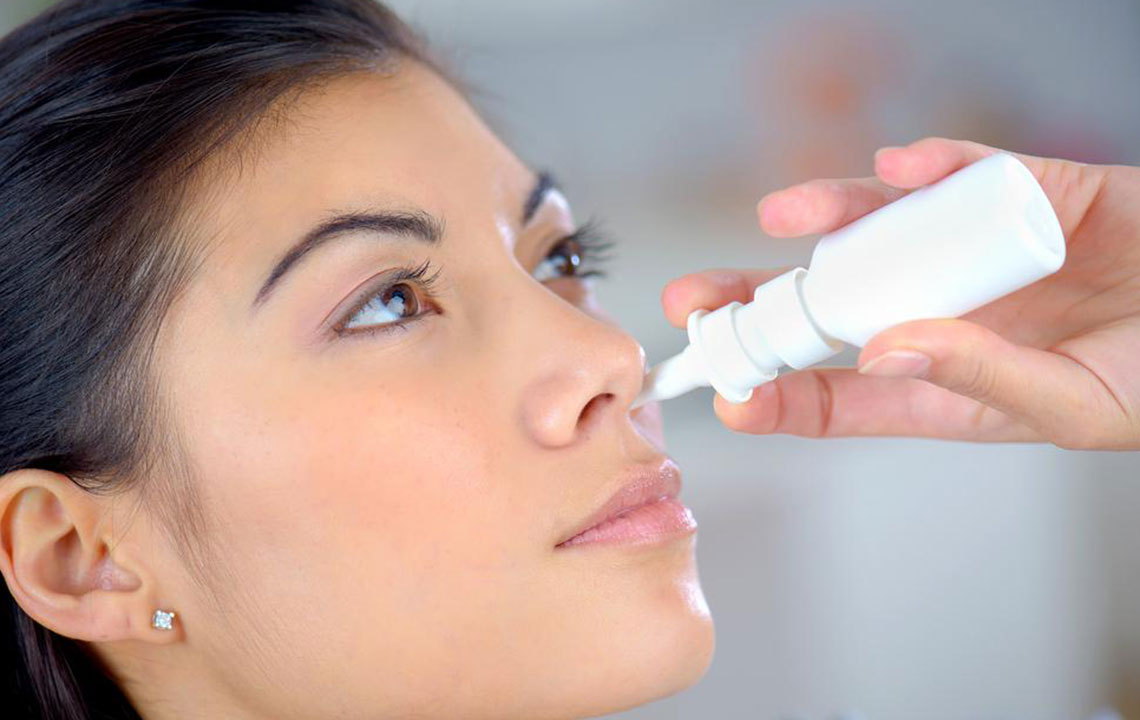Tips to Buy the Right Nasal Spray for Dust Allergies

Children are more vulnerable to dust mite allergies as compared to adults. Dust mites are a classification of arachnids which are not visible to the naked eye. These are most likely to thrive in environments which are as follows:
- Warm
- Humid
- Dark
Dust mites form a large section of house dust allergens. Some other places where dust mites are likely to live are as follows:
- Mattresses
- Pillows
- Carpets
- Upholstered furniture
Dust mites are present in homes all through the year. However, their numbers are higher during days with higher humidity. Dust mites feed on dander. Dander is the flaking of an animal’s skin. Therefore, if you have a pet animal, you are more likely to have to deal with dust mites. When dust mites are in the bedroom, it does not indicate a lack of cleanliness. It’s simply bad ventilation and high humidity which creates this environment. This environment is perfect for dust mites to thrive.
Symptoms of a dust mite allergy
Dust mites have over a dozen allergens. This makes the likelihood of an allergy caused by dust mites, fairly high. Symptoms are often the worst during mornings and at night when you come across dust mites in bed. Dust mite allergies are at the highest during the latter months of summer and spring. However, they prevail all around the year. Some of the symptoms associated with dust mite allergies are as follows:
- Itchy eyes
- Eczema
- Sneezing
- Colds and coughs
- Congestion
Treating a dust mite allergy
For treating dust mite allergies, over-the-counter medicines could be very effective. A nasal spray for dust allergy could be useful for helping you get over symptoms such as follows:
- Running nose
- Cold and cough
- Congestion
Some common queries people have before they decide which nasal spray to opt for are as follows:
- Does one need a prescription for the nasal spray?
- Would an over-the-counter product meet the requirements?
Buy nasal spray for dust allergy
Prescription nasal sprays
Beconase, Nasonex, and Flonase are the most common prescription nasal sprays if you’re going to buy nasal spray for dust allergy. These contain corticosteroids as their primary active ingredient. These sprays are effective for treating symptoms such as follows:
- Itching sensation in the nose
- Running nose
- Sneezing
Antihistamine nasal sprays
Astelin or Azelastine is one of the primary antihistamine nasal sprays and is one of the most popular options if you’re going to buy nasal spray for dust allergy. These operate by halting the effect of the histamines. A histamine is a compound produced by the immune system when attacked by allergies. It’s what causes the symptoms associated with allergies. Antihistamine nasal sprays are very effective for treating symptoms such as follows:
- Nose congestion
- Blocked sinus
- Postnasal drip
Over-the-counter nasal sprays
Many of over-the-counter sprays have cromolyn sodium as the key anti-inflammatory agent. You can easily buy nasal spray for dust allergy. Using these sprays before an attack by allergens might help prevent allergy symptoms.
Nonprescription nasal sprays
Some key nonprescription nasal sprays are Afrin and Dristan. These are helpful for reducing nasal allergies and are one of the best choices when one is going to buy nasal spray for dust allergy. However, you must be careful when using over-the-counter decongestant sprays. It is fine to use them for one or two days if you suffer from a cold. However, these are not a viable long-term alternative for the treatment of allergies.
Saline nasal sprays
Saline nasal sprays are saltwater solutions. These make the mucus softer, which makes its exit easier. If you suffer from an allergy, saline nasal sprays can be an effective treatment option. This is because these are free of potential side-effects.
It is very important that you make sure you use the nasal spray in the recommended manner. If not used in a prescribed way, nasal sprays could lead to symptoms such as follows:
- Nosebleeds
- Flake formation in the nose
Tips for using nasal sprays
- Blow your nose before using the nasal spray; this could clear the nasal passage
- Close one nostril as you use the spray
- Hold the nozzle below the other nostril
- Squeeze the pump in a light manner
- Breathe in gently as you spray it
How to buy nasal sprays for dust allergy based on your symptoms
Antihistamine
An antihistamine spray would be the best treatment for you if you are suffering from the following:
- Sneezing
- Runny nose
- Itchy throat
Decongestant
A decongestant spray would make the most appropriate treatment if you have a stuffy nose.
Antihistamines and decongestants
You may have buy nasal spray for dust allergy with antihistamines and a decongestant as one of its ingredients if you experience:
- Sneezing
- Runny nose
- Itchy throat
- Stuffy nose
You must avoid using OTC decongestant nasal sprays for many days at a stretch. In this case, the body may develop a tolerance to these. The congestion might worsen upon stopping the usage of the decongestant spray. Nasal sprays could be very effective for treating dust allergies. Consult your doctor and figure out the best course of treatment if
- Symptoms are severe, persistent, or asthmatic
- If you have allergic reactions which call for emergency treatment


